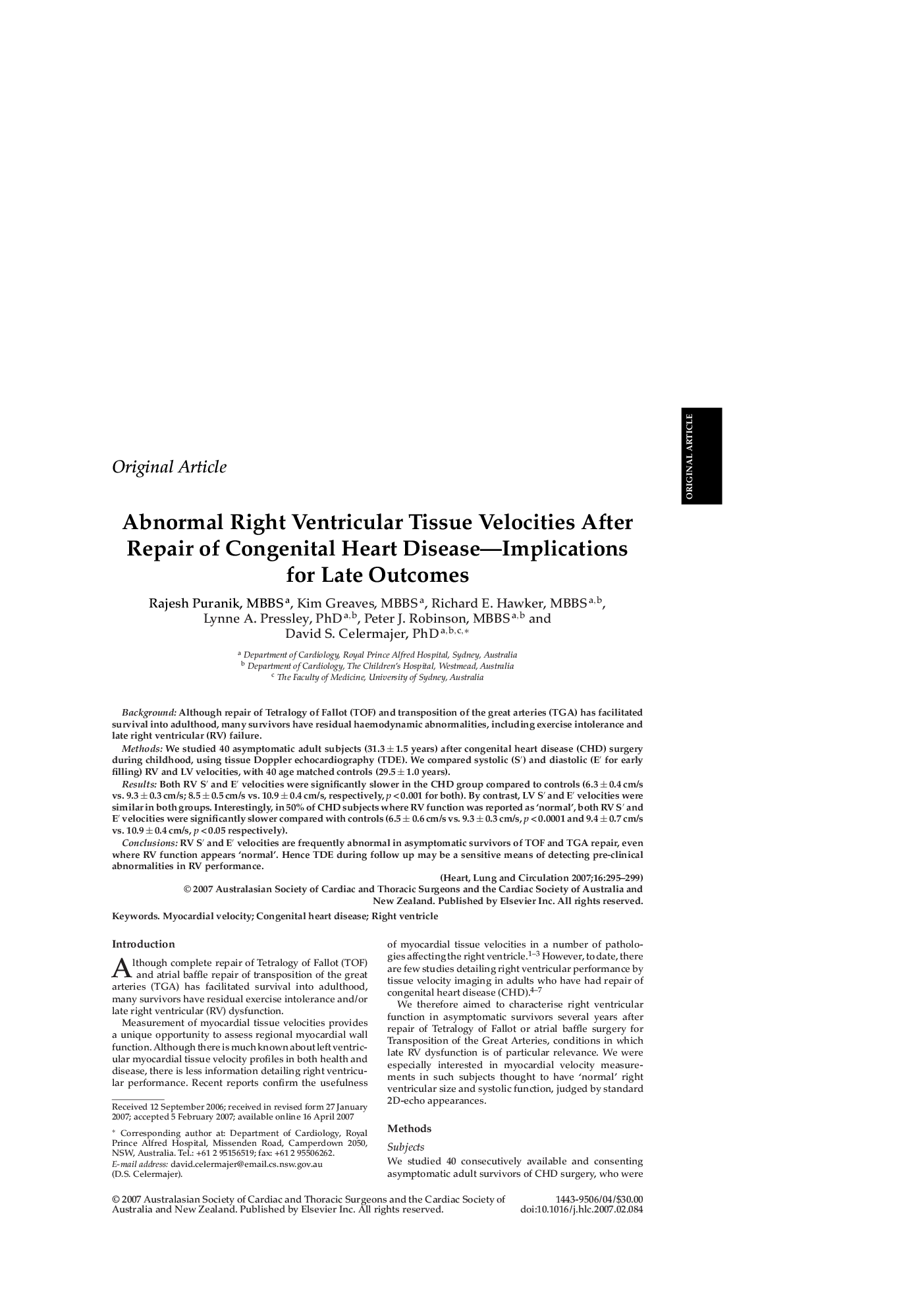| Article ID | Journal | Published Year | Pages | File Type |
|---|---|---|---|---|
| 2921353 | Heart, Lung and Circulation | 2007 | 5 Pages |
BackgroundAlthough repair of Tetralogy of Fallot (TOF) and transposition of the great arteries (TGA) has facilitated survival into adulthood, many survivors have residual haemodynamic abnormalities, including exercise intolerance and late right ventricular (RV) failure.MethodsWe studied 40 asymptomatic adult subjects (31.3 ± 1.5 years) after congenital heart disease (CHD) surgery during childhood, using tissue Doppler echocardiography (TDE). We compared systolic (S′) and diastolic (E′ for early filling) RV and LV velocities, with 40 age matched controls (29.5 ± 1.0 years).ResultsBoth RV S′ and E′ velocities were significantly slower in the CHD group compared to controls (6.3 ± 0.4 cm/s vs. 9.3 ± 0.3 cm/s; 8.5 ± 0.5 cm/s vs. 10.9 ± 0.4 cm/s, respectively, p < 0.001 for both). By contrast, LV S′ and E′ velocities were similar in both groups. Interestingly, in 50% of CHD subjects where RV function was reported as ‘normal’, both RV S′ and E′ velocities were significantly slower compared with controls (6.5 ± 0.6 cm/s vs. 9.3 ± 0.3 cm/s, p < 0.0001 and 9.4 ± 0.7 cm/s vs. 10.9 ± 0.4 cm/s, p < 0.05 respectively).ConclusionsRV S′ and E′ velocities are frequently abnormal in asymptomatic survivors of TOF and TGA repair, even where RV function appears ‘normal’. Hence TDE during follow up may be a sensitive means of detecting pre-clinical abnormalities in RV performance.
